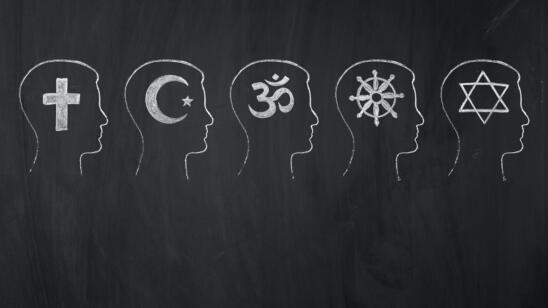The process of wedding planning and marriage usually differs from culture to culture and our youngest Arranged couple, Ben and Vicki, take on a very specific set of traditions as a millennial Orthodox Jewish couple set to walk down the aisle.
As you may have noticed, there are plenty of phrases specific to their culture that they use. Need a hand breaking down how they prep for the big day? Here’s a quick guide to the some of the terms that Vicki and Ben use leading up to their wedding.
1. Kallah (Bride to Be)
The term kallah means bride/bride-to-be. Before walking down the aisle, the kallah goes through a few traditions, like “kallah lessons.” In these lessons, the kallah reviews the Jewish laws of “Taharat HaMishpacha,” or “family purity” that they can expect in their marriage from their kallah teacher.
2. Sheitel (Wig)
A sheitel is a wig that Orthodox women use to cover their hair after getting married. The tradition of women wearing sheitels has been around for centuries, and women use them to cover their “ervah,” or nakedness, for everyone except their husbands. Nowadays, there are plenty of style options that a wife can choose from when picking a wig.
3. Shadchan (Matchmaker)
A shadchan is a matchmaker for Orthodox Jewish people. Some people go to a shadchan with specific requests for a potential mate through the “shidduchim,” or matchmaking, process. The shadchan can be a professional or a friend/family member that sets up the couple within the Jewish community. And since girls and boys in the Orthodox community don’t have much interaction with each other growing up, the shadchan is pretty useful.
4. Bedeken (Veiling Ceremony)
The bedeken, known as the veiling ritual, happens when the groom makes his way to the bride’s throne. Once he reaches her, he places the veil over her face and recites a blessing. Even though the bride and groom are close to the end of the wedding ceremony, they still aren’t allowed to touch. It’s also a tradition that only happens during a bride’s first marriage.
5. Yichud Room (Seclusion Room)
After the wedding, or “chupah,” the couple goes to the yichud room, also known as the seclusion room. This is where they can finally get some alone time and touch each other. Before the wedding, there’s absolutely no one-on-one time and no skin-to-skin touching, so the yichud room after the wedding is a pretty big deal.
There you have it, these are just a few terms that you’ll hear leading up to Ben and Vicki’s weddings. You can find out even more expressions in the Orthodox Jewish culture by watching full episodes of Arranged. And tune-in on Tuesdays at 9/8c for new episodes!


